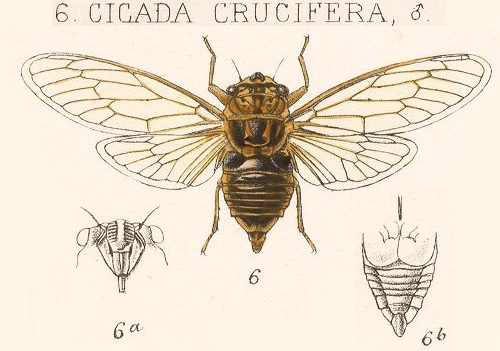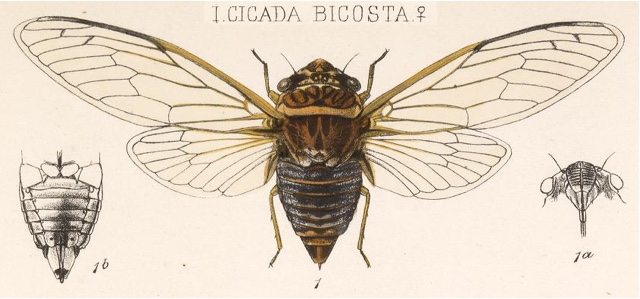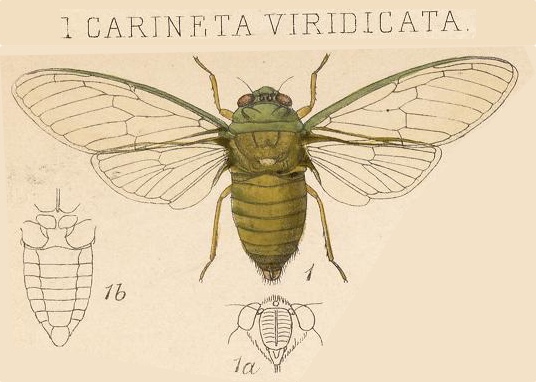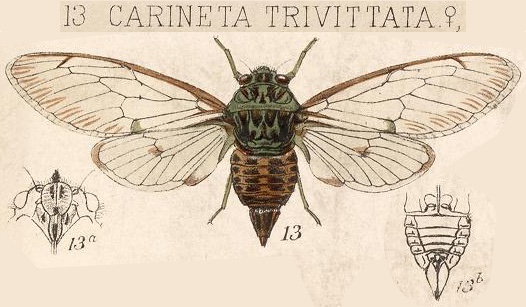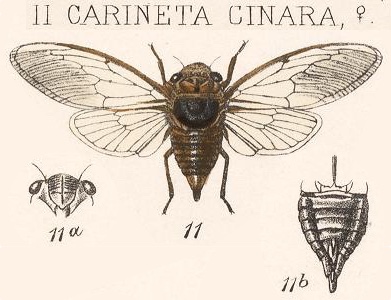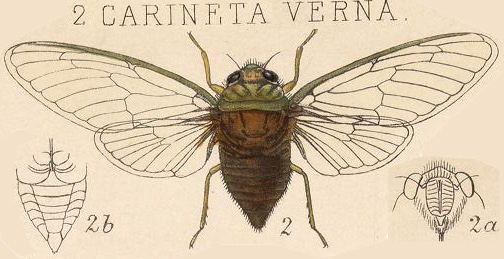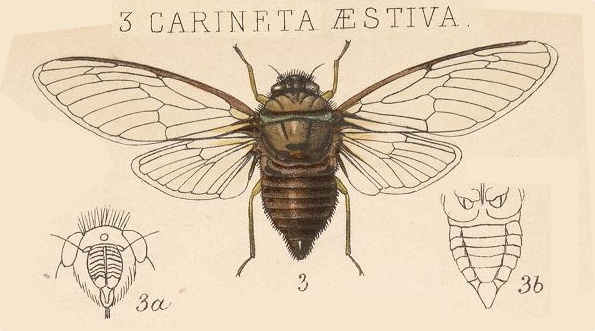Diceroprocta alacris & Diceroprocta apache are two cicadas, both found in Mexico. I’m covering them both in the same post because they were both formerly refrered to as Cicada transversa.
Diceroprocta apache
D. apache was formerly known as Cicada transversa.
Scientific classification:
Family: Cicadidae
Subfamily: Cicadinae
Tribe: Cryptotympanini
SubTribe: Cryptotympanina
Genus: Diceroprocta
Species: Diceroprocta apache (Davis, 1921)
D. apache, aka Citrus Cicada, is also found in the southern United States. Visit this page to listen to its song.
D. apache have triangle-shaped opercula.
Cicada transversa illustration from Insecta. Rhychota. – note the shape of the triangular shape of the opercula:
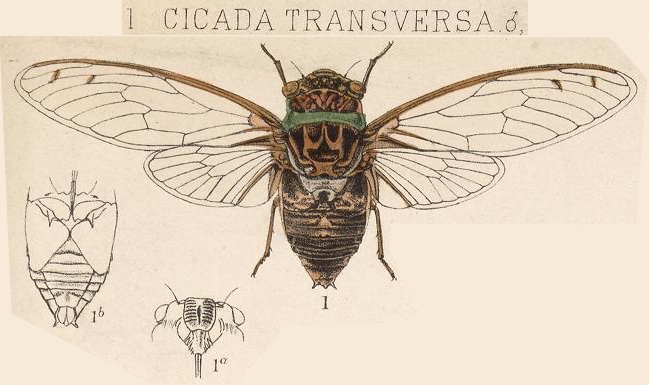
A photo of D. apache from my collection. Same/similar cicada? Maybe, maybe not. Note the opercula:
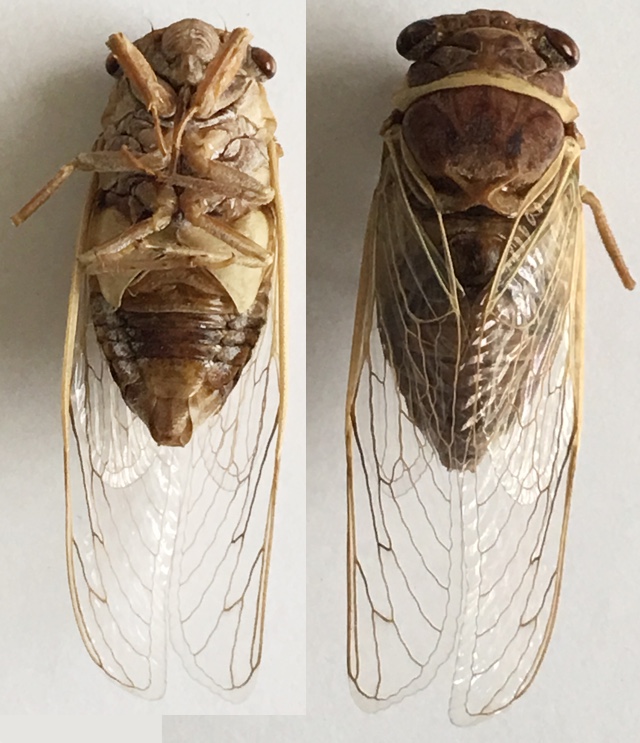
Diceroprocta alacris
There are two subspecies: D. alacris alacris (Stål, 1864) and D. alacris campechensis Davis, 1938.
Diceroprocta alacris was formerly known as Cicada alacris as well as Cicada transversa.
Scientific classification:
Family: Cicadidae
Subfamily: Cicadinae
Tribe: Cryptotympanini
SubTribe: Cryptotympanina
Genus: Diceroprocta
Species: Diceroprocta alacris
Subspecies: D. alacris alacris (Stål, 1864)
Subspecies: D. alacris campechensis Davis, 1938
Two varieties of Cicada alacris – note the rounded shape of the operculum:
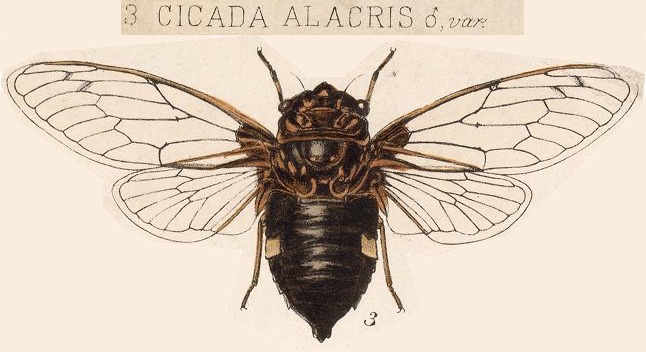
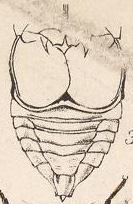
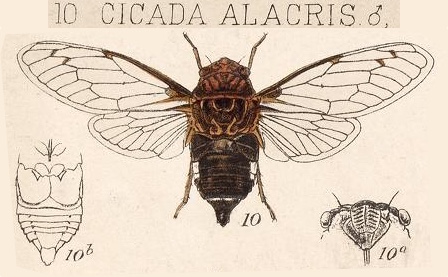
References:
- The illustration comes from Biologia Centrali-Americana. Insecta. Rhynchota. Hemiptera-Homoptera. Vol. 1. By W. L. Distant F.E.S. and The Rev. Canon W. W. Fowler, F.L.S. (1881-1905). Read it on the Biodiversity Heritage Library website.
- Species name verification comes from Allen Sanborn’s Catalogue of the Cicadoidea (Hemiptera: Auchenorrhyncha).


